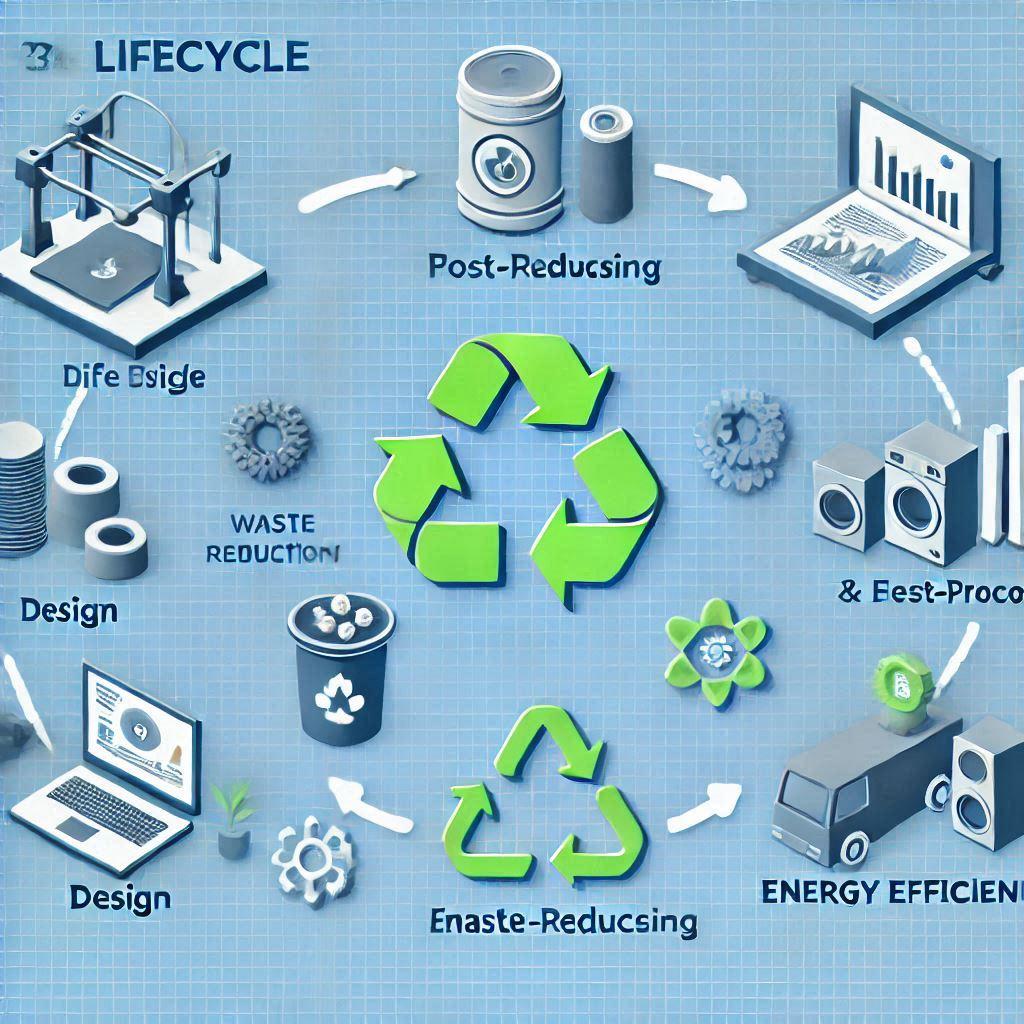
3D printing technology is evolving at an unprecedented pace, and one of the most exciting areas of advancement is in materials development. As industries such as healthcare, aerospace, and sustainable manufacturing continue to integrate 3D printing into their processes, new materials are expanding the possibilities of what can be created. From biodegradable filaments to smart polymers, here’s a look at some of the most promising new materials shaping the future of 3D printing, their historical evolution, and real-world implications.
Evolution of 3D Printing Materials: From Prototyping to Industrial Use
3D printing materials have evolved significantly since the introduction of additive manufacturing in the 1980s. Initially, only photopolymer resins were used for stereolithography (SLA), limiting the technology to prototyping applications. Over time, new material options such as thermoplastics, composites, and metals have enabled functional and industrial applications. Today, the focus is shifting toward sustainability, multi-material capabilities, and high-performance materials that push the boundaries of what 3D printing can achieve.
Eco-Friendly 3D Printing: Biodegradable and Sustainable Materials
With growing environmental concerns, researchers and manufacturers are prioritizing eco-friendly 3D printing materials. The goal is to reduce waste and carbon footprints while maintaining high-performance standards.
- Next-Gen PLA Alternatives: Polylactic Acid (PLA) is widely used due to its biodegradability, but scientists are developing even more sustainable alternatives, such as biopolymers derived from algae or agricultural waste. Companies like ColorFabb and Fillamentum are pioneering new bio-based materials.
- Revolutionizing Recycling with 3D Printing Filaments: Filaments made from recycled plastic waste, such as PET bottles, help promote circular economy practices and reduce landfill contributions. Organizations like Refil and Print the Future are leading the way in making 3D printing more sustainable.
- Organic and Plant-Based Innovations: Innovations in 3D printable materials include hemp-based and lignin-based filaments, offering renewable and biodegradable alternatives for a variety of applications, including packaging and biodegradable medical devices.
Multi-Material 3D Printing: A Game-Changer for Advanced Manufacturing
The ability to print with multiple materials simultaneously opens doors for more complex, functional, and durable objects. This capability is particularly promising for industries like electronics, robotics, and automotive manufacturing.
- Conductive 3D Printing: The Future of Electronics: Printing with conductive and insulating materials in a single process enables the creation of functional electronic components, such as printed circuit boards (PCBs) and wearable electronics. Researchers at MIT and Harvard are already experimenting with integrating these materials into smart fabrics.
- Composite Filaments: Strength and Flexibility Combined: Materials infused with carbon fiber, metal, or ceramics enhance strength, flexibility, and thermal resistance, making them ideal for industrial applications such as aerospace and automotive components. Companies like Markforged and Desktop Metal have made significant strides in this area.
- Hybrid Materials for Customizable and Adaptive Applications: Combining rigid and flexible materials allows for dynamic applications, such as prosthetics, soft robotics, and adaptive structures. NASA has been developing hybrid materials for use in space missions where flexibility and durability are crucial.
Smart Materials: The Next Frontier in 3D Printing
Smart materials respond to external stimuli such as temperature, light, or electricity, enabling self-adaptive properties in 3D-printed objects.
- Shape-Memory Polymers for Self-Assembling Structures: These materials can change shape when exposed to heat or other stimuli, allowing for applications like self-assembling structures, medical implants, and deployable aerospace components. Airbus is investigating the use of shape-memory materials in adaptive aircraft components.
- Self-Healing 3D Printing: The End of Wear and Tear?: Self-repairing polymers extend the lifespan of printed objects by autonomously repairing cracks or breaks when exposed to specific triggers, such as UV light or heat. The automotive industry is exploring these materials for self-repairing vehicle components, reducing maintenance costs and increasing sustainability.
- Color-Changing and Responsive 3D Printing Materials: Thermochromic and photochromic materials can alter their appearance based on environmental conditions, useful for applications in fashion, security, and interactive designs. Fashion designers are beginning to incorporate these materials into customizable clothing that changes color based on temperature.
Bio-Based 3D Printing: Revolutionizing Healthcare, Fashion, and Food
Bio-based materials have the potential to revolutionize industries such as healthcare, fashion, and food production by enabling biocompatible and sustainable innovations.
- 3D Bioprinting: The Future of Personalized Medicine: Bioinks containing living cells are paving the way for 3D-printed tissues, organs, and skin grafts for medical applications, offering groundbreaking possibilities for regenerative medicine and drug testing. Companies like Organovo are leading efforts in developing functional tissue printing.
- Sustainable Textiles: Eco-Friendly Fashion with 3D Printing: 3D-printed bio-based fabrics can reduce waste and water consumption in the fashion industry, leading to the development of customizable, biodegradable clothing. Adidas and Nike are experimenting with 3D-printed sustainable shoe designs.
- Edible 3D Printing: The Future of Personalized Nutrition: Food-grade bioinks made from plant-based proteins, vitamins, and other nutrients are making 3D food printing a viable solution for personalized nutrition and sustainable food production. Restaurants and food tech startups, such as Natural Machines, are developing 3D-printed meals tailored to individual dietary needs.
Industrial Strength: High-Performance 3D Printing Materials for Extreme Applications
For industries requiring durable and high-strength components, advancements in high-performance materials are essential.
- High-Temperature Polymers for Extreme Environments: Materials such as PEEK (Polyether Ether Ketone) and PEI (Polyetherimide) can withstand extreme temperatures, making them ideal for aerospace, automotive, and industrial applications. Boeing and Lockheed Martin are incorporating these materials into their aircraft manufacturing processes.
- Metal 3D Printing: Stronger, Lighter, and More Efficient: Metal 3D printing is evolving with stronger, lightweight alloys for applications in space exploration, medical implants, and high-stress mechanical components. SpaceX and Tesla are utilizing 3D-printed metal parts to enhance performance and reduce manufacturing costs.
- Advanced Ceramic 3D Printing for Aerospace and Biomedical Innovations: Advances in ceramic 3D printing enable the creation of heat-resistant and chemically stable objects for use in aerospace, biomedical, and electronics industries. Companies like Lithoz are producing high-performance ceramic components for medical and industrial use.
The Future of 3D Printing Materials: What Lies Ahead?
The development of advanced 3D printing materials is shaping the future of manufacturing, healthcare, and sustainable production. With AI-driven design optimization, automation, and large-scale 3D printing becoming more prevalent, these materials will revolutionize industries by enabling more efficient, eco-friendly, and high-performance solutions. As research continues, we can expect to see even more breakthroughs that redefine the boundaries of what’s possible with 3D printing.
The future is bright for 3D printing materials, and as new discoveries emerge, the applications will only continue to grow—transforming everything from consumer products to space exploration and beyond. Whether it’s NASA’s efforts to print habitats on Mars, hospitals using bio-inks for regenerative medicine, or designers crafting sustainable fashion, the real-world implications of 3D printing materials are vast and transformative.

